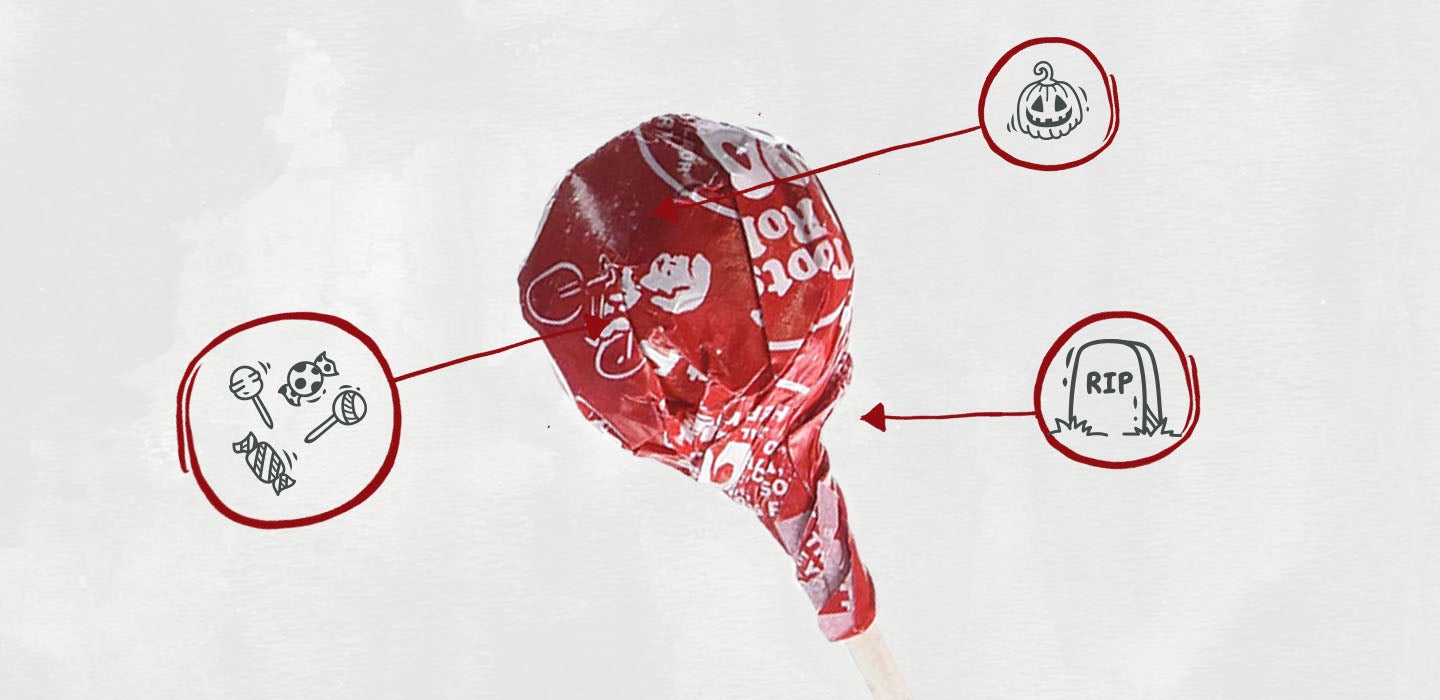We’re often told that you should never eat anything (or put anything on your body) if you don’t recognize everything on the ingredients list. But since most of us have no idea what xanthan gum or potassium benzoate are — or more importantly, what they’re doing to our bodies — we’re decoding the ingredients in the many things Americans put in (and on) themselves with the help of an expert.
This edition: Tootsie Pops, which are made from 11 separate ingredients that we’ve broken down in the exact order they appear on their website.
But first — since we all want to know — science has yet to conclusively figure out how many licks it really takes to get to the center of a Tootsie Pop. Engineering students from Purdue University built a licking machine that took an average of 364 licks; however, when human volunteers attempted the challenge, they averaged 252 licks. A chemical engineering student from the University of Michigan also built a licking machine that needed 411 licks to reach the center. And finally, a group of human lickers from a junior high school in Swarthmore, Pennsylvania, averaged only 144 licks to reach the center.
All of which means that the number of licks it might take you to get to the center of a Tootsie Pop probably depends on how strong (and moist) your tongue is.
With that, let’s dive into the ingredients…

The Ingredients
1) Sugar: One Tootsie Pop contains 11 grams of sugar — that’s nearly three teaspoons, which is a significant amount. For reference, the American Heart Association recommends men consume no more than 36 grams and women consume no more than 25 grams of added sugar a day (and that doesn’t include sugar found naturally in foods like fruits and vegetables).
2) Corn Syrup: Corn syrup is a liquid sweetener made of glucose. It doesn’t get as much negative publicity as high fructose corn syrup, which has been linked to obesity and diabetes by many, many studies (more on that here), but regular corn syrup can also be debilitating, considering it’s basically liquid sugar.
3) Palm Oil: Physician and biochemist Cate Shanahan, author of Deep Nutrition: Why Your Genes Need Traditional Food, previously told me that consuming too much vegetable oil — which is easy to do, considering she says roughly 45 percent of the average American’s calories come from refined oils — has serious repercussions (e.g., fatty liver disease, insulin resistance and migraines). While it’s near impossible to eliminate vegetable oil from your diet altogether — major contributors include processed foods, fried foods, frozen pizzas, cakes, cookies, margarines and coffee creamers — it’s best consumed in moderation. Worse yet, as we discovered during our recent ranking of cooking oils by how unhealthy they are, palm oil is one of the least healthy oils available.
4) Citric Acid (May Contain Malic Acid): Citric acid naturally occurs in citrus fruits, and it’s often added to foods to extend their shelf life. Similar to citric acid, malic acid can be found in many fruits and vegetables, and it’s responsible for the sour taste in apples and pears.
5) Condensed Skim Milk: This is milk that’s been thickened by removing the water. Sugar is also typically added to condensed skim milk during canning. It’s often used in baked goods, desserts and as a sweetener in coffee or tea.
6) Cocoa: Cocoa is made from roasted cocoa beans and used to give a chocolate flavor to foods. This ingredient is responsible for the chocolatey center of a Tootsie Pop.
7) Whey: Whey is essentially the liquid leftovers after milk has been curdled and strained. It’s usually added to processed foods as a source of protein and to add bulk.
8) Artificial and Natural Flavors: While natural flavors are literally flavors derived from an actual food source — i.e., cherry flavoring taken from a real cherry — artificial flavors are chemical compounds created in a lab that mimic a natural flavor in some way. While that may sound unhealthy, as Shanahan told us during our exploration of all 26 ingredients in nacho-flavored Doritos, these flavorings are added in such small quantities that they shouldn’t cause you any harm.
9) Soy Lecithin: Soy lecithin is a component of fat found in (you guessed it!) soy. It’s typically added to food products as an emulsifier. In simpler terms, it helps the numerous ingredients found in Tootsie Pops mix together. “It’s also frequently used to extend product shelf life,” Dagan Xavier, ingredient expert and co-founder of Label Insight, told me during our analysis of the ingredients in frozen breakfast sandwiches.
10) Artificial Colors (Including FD&C Red 40, Yellow 5, Blue 1): Artificial colors have a bad reputation, but as Shanahan explained during our analysis of Doritos, studies arguing this are a bit flawed:
“I’ve always been of the opinion that studies claiming artificial colors can cause cancer are irrelevant because [in the studies] they use really high amounts of the artificial colors — like, a million times more than you’d ever get [in your] food [throughout your lifetime].”
All in all, the average person’s liver should be able to break down whatever minuscule amount of artificial coloring we consume with food.
11) Strawberry Powder: This is exactly what it sounds like: Powdered strawberries added for flavor.
The Takeaway
Like most commercial candy, Tootsie Pops are basically just sugar and vegetable oil mixed with a spattering of artificial flavors and colors. But the strawberry powder might contain the same vitamins and minerals found in the puniest little nibble of an actual strawberry, so, uh, there’s that?

